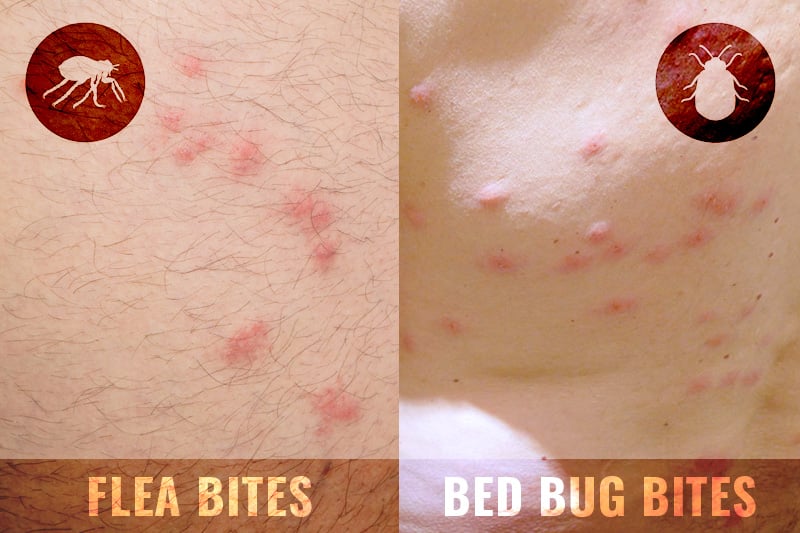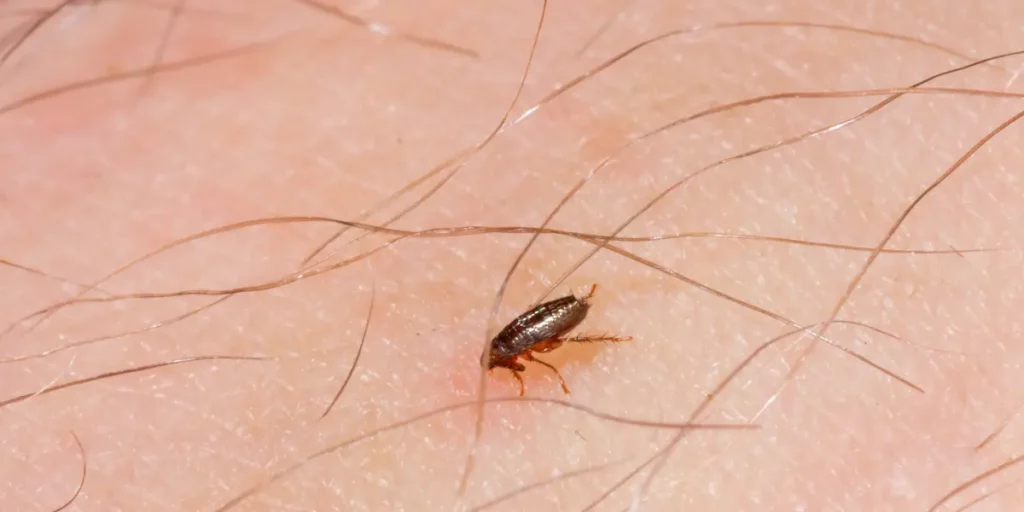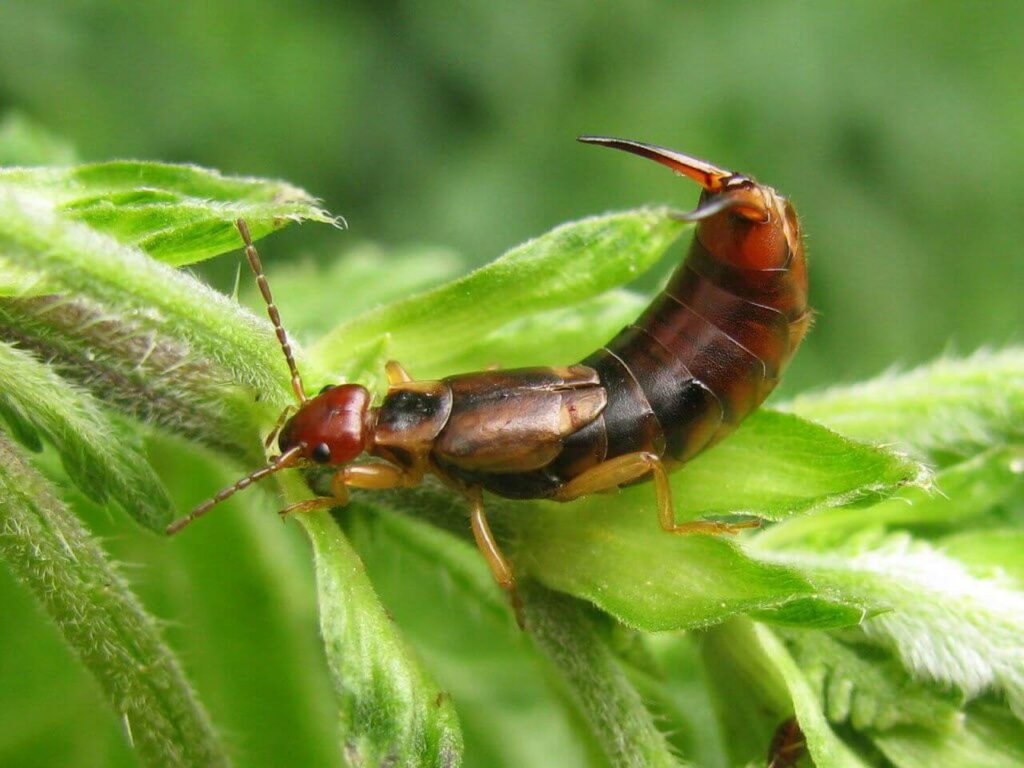Earwig Bite – The Information You Seek!

Earwigs live where microscopic organisms, like soil and depleted and rotting plants, can develop and flourish.
Along these lines, their nibbles can cause skin diseases if they’re not accurately cleaned after being squeezed.
This chance increments if the earwig’s pliers sever in the skin. In this situation, the site might become enlarged and firm. It might later shape into a rankle.
This blister could become infected without proper care, leading to skin infections. Symptoms of cellulitis include:
- red, inflamed skin in the affected area
- tenderness and pain around the pinch site
- tight, shiny-looking enlarging of the skin around the site
- a quickly developing rash or sore that shows up out of nowhere
- an abscess in the centre of the site that oozes pus
- fever
- warm sensation in the affected area
When cellulitis is severe, you may experience:
- chills
- general malaise
- shaking
- dizziness
- fatigue
- lightheadedness
- aching muscles
- sweating
- warm skin
In extreme cases, a skin disease like this can happen. This is a perilous foundational disease. You could be in danger of sepsis assuming that you have:
- blistering
- red streaks
- drowsiness
- Lethargy
On the off chance that you’re encountering these side effects or comparable, contact your PCP or visit the trauma center right away. Sepsis is a health-related crisis that should be treated in the emergency clinic with intravenous anti-microbials.
What’s The Difference Between Flea Bites And Bedbug Bites? – Let’s Read It!

Both flea and bedbug bites can look like tiny dots on your skin. Bug chomps are often found on the lower part of your body or in warm, sodden spots like the curves of elbows and knees. Bedbug bites tend to be on the upper part of your body, near your face, neck, and arms.
If you see a bunch of tiny dots on your skin, they might be flea or bedbug bites. It’s hard to tell them apart because they look similar.
Flea bites usually happen on your lower body or in warm, moist areas like elbow bends and knee creases. Bedbug bites are more common on your upper body, face, neck, and arms.
To find out more about each type of bite, read on:
Flea Bites 101:
Fleas are tiny bugs that suck blood. About 5% of fleas live on pets, and that’s usually how people get flea bites. Fleas can’t fly, but they can jump up to 18 centimeters. Once they land on you, they start biting.
Symptoms:
Flea bites often leave minor red marks on your skin, making you want to scratch a lot. Sometimes, the bites come in groups of three. Flea bites usually happen on or near your:
- Feet and lower legs
- Waist
- Ankles
- Armpits
- Elbows and knees (in the bend)
- Other places where skin folds
Risk factors:
You might get hives or a rash if you’re allergic to fleas. The area where you got bitten might swell up and form blisters. If you scratch your skin too much, you could get another infection.
Fleas can even live on your skin. For instance, fleas can burrow into your skin and cause a problem called tungiasis. This usually happens around your feet and toes. These tropical or subtropical fleas can dig under your skin to feed. They’ll die after two weeks, but they often leave a nasty skin infection behind.
How To Treat Flea Bites – Let’s Talk About It!

For flea bites, start by washing them with soap and water. If they itch, you can use anti-itch cream or take a lukewarm oatmeal bath for relief.
Avoid hot showers, as they can make itching worse. If you think you’re allergic, take an antihistamine to prevent a reaction.
See your doctor if you suspect an infection or if the bites don’t disappear after a few weeks. They might prescribe antibiotics or other medicines if needed.
To prevent fleas at home, keep floors and furniture clean by vacuuming regularly and using steam on carpets.
If your pets go outside, mow the lawn regularly and check them for fleas. You can also use pest control services and wash your pets with soap and water. Consider using flea collars or monthly medications for your pets as well.
How To Identify And Treat Spider Bites – Discover Now!
Identifying and treating spider bites is essential to keep you safe. When you’re figuring out if a bite is from a spider, look at how it looks and if it makes you feel itchy, swollen, or in pain.
Different spiders can cause different reactions, like redness or even severe symptoms. If you think you’ve been bitten, clean the area with soap and water, and use a cold pack to reduce swelling and pain. You can also take over-the-counter pain medicine.
But if the symptoms get worse or don’t go away, it’s best to see a doctor for help. By knowing how to spot and treat spider bites, you can stay safe and avoid problems.
Learn More About The Typical Earwig Diet – Click Here!

Outdoor earwigs have a reasonably typical diet. According to Iowa State’s Extension program, earwigs will feed on plants, insects, and decaying matter.
If you have a significant outdoor infestation of earwigs, they might start causing damage to your vegetable, fruit, or flower plants.
Watch for small holes in your fruits, vegetables, or plant leaves. Although it can be tricky to distinguish earwig damage from other insects, earwigs can leave distinctive jagged patterns on your plants.
When earwigs find their way indoors, they may head straight for the food in your pantry! While they might snack on any stray insects in your home, earwigs usually prefer to feast on your groceries.
In addition to fruits and vegetables, earwigs will munch on grain products, flour, cookies, bread, and other items in your cupboards.
If your food isn’t properly stored or you have crumbs, earwigs will feel free to make themselves at home in your kitchen!
Conclusion:
Earwig bites may cause itching but are generally harmless and don’t usually require medical treatment. However, cleaning the area and watching for signs of infection is essential. If symptoms worsen or persist, seeking medical advice is recommended.
FAQs:
1. Are earwig bites dangerous?
Earwig bites are typically not dangerous, resulting in mild discomfort or itching. Immediate washing with soap and water can help alleviate symptoms.
2. How would it be advisable for me to respond assuming I get chomped by an earwig?
If bitten by an earwig, promptly wash the affected area with soap and water to cleanse it thoroughly. Following this, apply a cold compress to reduce any swelling and alleviate discomfort. This simple first aid can help effectively manage the symptoms of an earwig bite.
3. Can earwig bites cause infections?
Although rare, earwig bites can result in infections if not adequately cleaned and tended to properly. It’s essential to cleanse the bite site thoroughly to mitigate this risk.
4. Why do earwigs pinch or bite?
Earwigs bite when feeling threatened or in self-defense. Their pincers serve as defensive weapons and aid in capturing prey and grooming. Understanding these behaviors helps manage earwig encounters and minimize the risk of bites.
Read:




